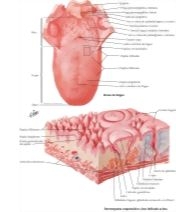What are Dental Veneers?
Dental veneers or porcelain veneers or dental porcelain laminates are wafer-thin, custom-made shells of tooth-colored materials designed to cover the front surface of teeth to improve your appearance.
These shells are bonded to the front of the teeth changing their color, shape, size, or length.
it;s a possible solution to help you achieve the look you desire. They are a popular choice for those with chipped teeth, a gap between teeth, or misshaped teeth.
Veneers can be used to correct a wide range of dental issues, such as:
- teeth that are stained and can’t be whitened by bleaching
- chipped or worn teeth
- crooked or misshapen teeth
- uneven spaces or a large gap between the upper front teeth
Types of Dental Veneers
Dental veneers can be made from porcelain or from resin composite materials. Porcelain veneers resist stains better than resin veneers. They also better mimic the light-reflecting properties of natural teeth. You will need to discuss the best choice of veneer material for you with your dentist.
Preparation
To prepare a tooth for a veneer, your dentist will reshape the tooth surface, which is an amount nearly equal to the thickness of the veneer to be added to the tooth surface. You and your dentist will decide whether they numb the area before trimming off the enamel. Next, your dentist will make a model, or impression, of your tooth. This model is sent out to a dental laboratory, which makes your veneer. It usually takes 2-4 weeks for the veneers to come back from the laboratory. Temporary dental veneers can be used in the meantime.
<
dir="ltr" style="box-sizing: inherit; letter-spacing: -0.273104px; margin: 0px 0px 0.715em;">Bonding
Your dentist will place the veneer on your tooth to examine its fit and color, repeatedly removing and trimming the veneer to achieve the proper fit, before permanently cementing it to your tooth. The veneer color can be adjusted with the shade of cement to be used. Next, to prepare your tooth to receive the veneer, your tooth will be cleaned, polished, and etched. Etching roughens the tooth to allow for a strong bonding process. A special cement is applied to the veneer and it is then placed on your tooth. Once the veneer is properly positioned, your dentist will shine a special light beam on it to activate chemicals in the cement, causing it to harden very quickly. The final steps involve removing any excess cement, checking your bite and making any needed adjustments. Your dentist may ask you to return for a follow-up visit in a couple of weeks to check your gums and the veneer's placement.
Dental Veneer Benefits
Veneers offer these advantages:
They provide a natural tooth appearance.
Gums tolerates porcelain well.
Porcelain veneers are stain resistant.
A color can be selected to make dark teeth appear whiter.
They generally don't require as much shaping as crowns do, yet they are stronger and look better.
Dental Veneer Risks
Downsides to dental veneers include:
The process cannot be undone.
Veneers cost more than composite resin bonding.
Veneers usually cannot be repaired if they chip or crack.
Because enamel has been removed, your tooth may become more sensitive to hot and cold foods and drinks.
Veneers may not exactly match the color of your other teeth. Also, the veneer's color cannot be altered once it’s in place. If you plan on whitening your teeth, you need to do so before getting veneers.
Though not likely, veneers can dislodge and fall off. To minimize the chance of this occurring, do not bite your nails, chew on pencils, ice or other hard objects, or otherwise put too much pressure on your teeth.
Teeth with veneers can still experience decay, possibly necessitating full coverage of the tooth with a crown.
Veneers are not a good choice for people with unhealthy teeth (for example, those with decay or active gum disease), weakened teeth (as a result of decay, fracture, large dental fillings), or for those who don't have enough existing enamel on the tooth surface.
People who clench and grind their teeth are poor candidates for porcelain veneers, as this can cause the veneers to crack or chip.
Before you get veneers
- Your teeth and gums must be healthy before you get veneers. Your dentist can treat any disease or decay before your veneers are placed.
- Veneers are not always a good choice for patients who clench or grind their teeth, because the thin veneers may chip or break. If you clench or grind your teeth, your dentist may suggest you wear a plastic dental night guard while sleeping.
- Although your dentist removes as little tooth enamel as possible for veneers, the process cannot be undone once the enamel is removed.
- It is possible for veneers to come loose over time. In that case, new ones might be needed.
- As with all your dental care, discuss all your expectations and treatment options with your dentist. Regular dental visits are a must for keeping your teeth and gums healthy.
After you get veneers
- Veneers can chip or break under pressure. Avoid biting your fingernails and chewing on hard objects, such as pencils or ice.
- It may take you a few days to get used to the feel of your veneers. But do let your dentist know if your bite does not feel right after the veneer has been placed. He or she will correct it before you leave the office.
- Keep your teeth and gums clean by brushing and flossing each day. You can still get cavities under or around veneers. Look for dental care products that show the American Dental Association’s Seal of Acceptance. This says that a product has met ADA standards for safety and effectiveness.














